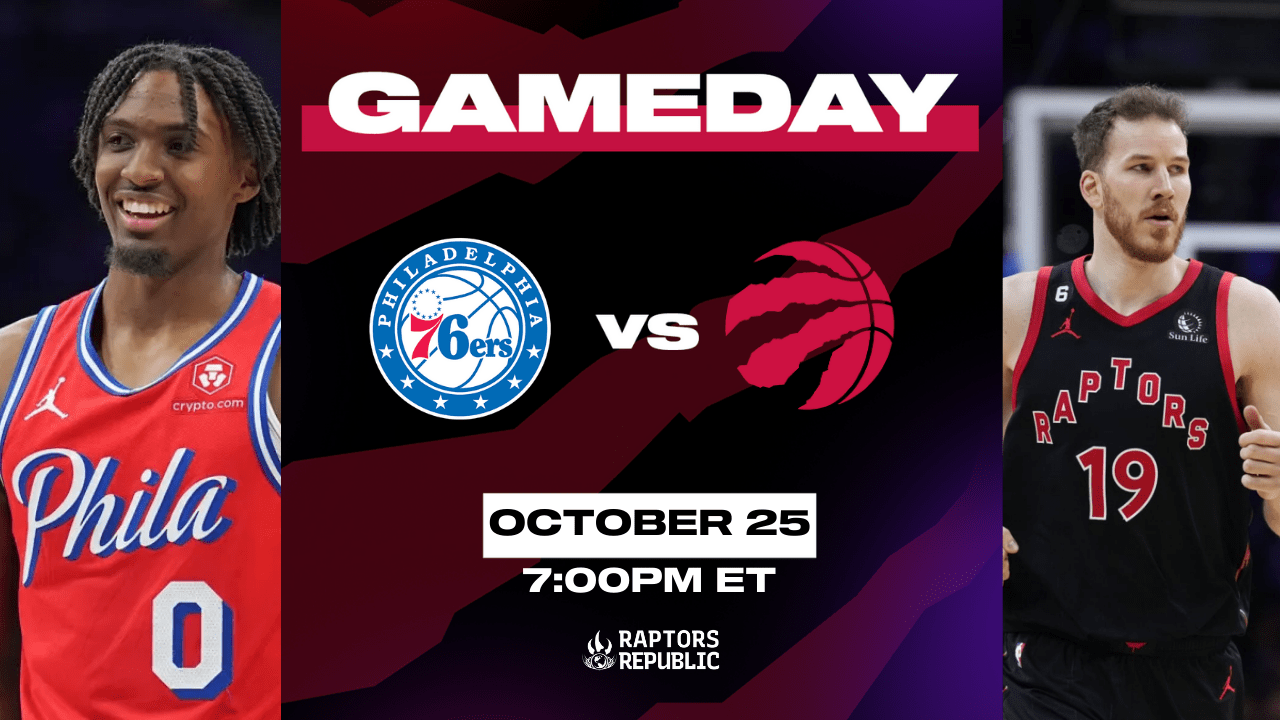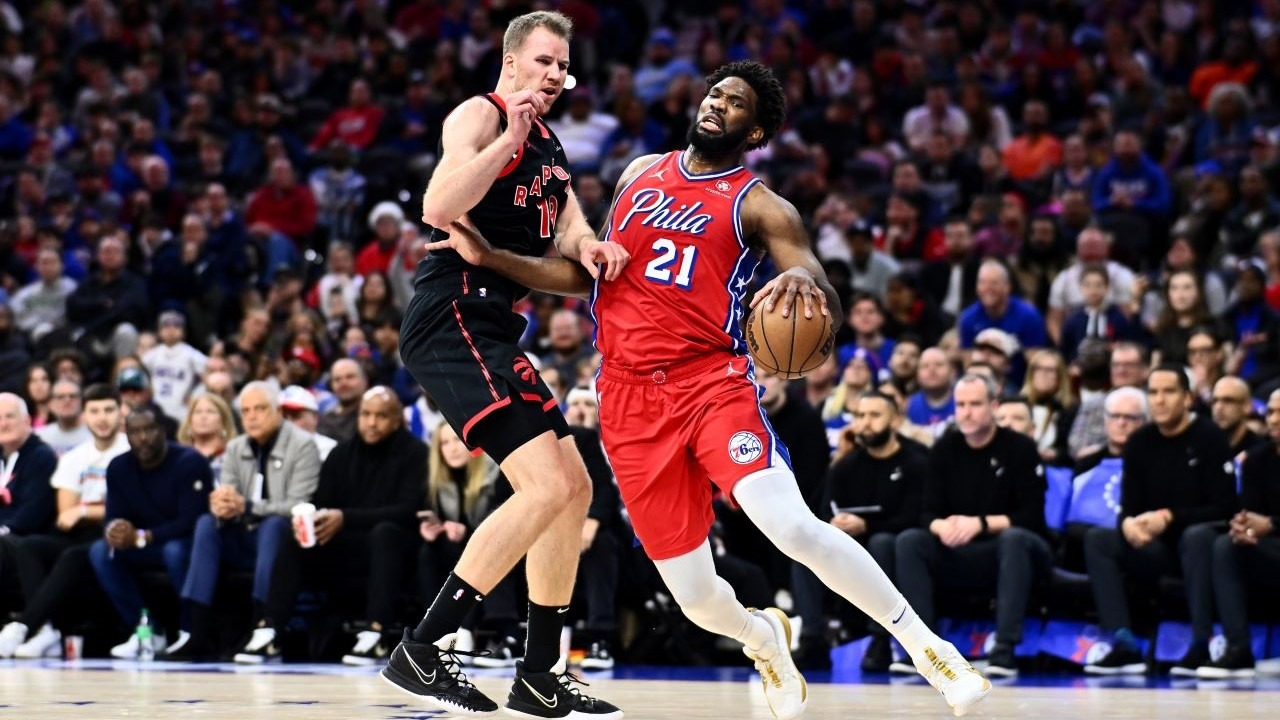On Sunday night, I witnessed a heated basketball game. One team deployed a zone for the entire contest, which really caused the other team some headaches. They couldn’t get easy shots or get their best players quality looks, and they were forced to play a monochromatic type of offense that was predictable and stale.
Moment of honesty? The team that I watched struggle was my men’s league team.
The team we faced made a bet on the opening tip: “These guys can’t shoot.” And while that usually isn’t right (we’re a decent shooting team, and we like to put them up like the opening night Celtics), it wasn’t the case this time. We struggled from behind the arc, and the trickle-down effect on our offense was gruesome. We didn’t have enough size to get into the teeth of their zone, and… we lost. Badly.
Fast-forward to Wednesday night, when the Toronto Raptors dealt with the same problem in their home opener. At the start of the second quarter, the Cleveland Cavaliers made the same bet the team we faced in the men’s league made: “These guys can’t shoot.” With the Raptors running their Scottie + bench platoon, the Cavs made a business decision: going into a 2-3 zone was the right call. For about four minutes, the Raptors’ offense went into a drought; the Cavs went on a 20-5 run and sealed the game. Finito.
“I thought there were a couple of opportunities where we could do a better job of taking shots,” Raptors Head Coach Darko Rajakovic said post-game when asked about the Cavs sticky zone defense. “We were driving inside, and their length at the rim deterred us from finishing… we talked about our spacing at halftime and looked at different ways to take better shots.”
The Raptors didn’t get a chance to explore that after halftime because, well, the game was over, and the Cavs had no interest in playing zone anymore. But it did bring about an interesting question:
Could we see more teams deploy zone coverage against a Raptors team that lacks in the shooting department?
There are a few different ways to be effective against a zone: shoot the ball well, get the ball into the middle of the zone, or have a superb athlete who can disrupt the zone’s core in the dunker spot.
The Raptors were pretty good against it last season. According to data provided to Raptors Republic, they were the third-best team against the zone, generating nearly 1.2 points per possession against the coverage. But they didn’t face it that often, ranking 17th in offensive possessions against a zone.
This is because they have three players who are natural zone breakers: Scottie Barnes, Jakob Poeltl, and Kelly Olynyk. All three can get into the middle of the zone and use their size to see over the top, attract attention, and make plays for their teammates. The Raptors’ offensive system of high-post actions and cutting is intrinsically effective against a zone. They needed to be reminded of that in their film session after the game:
“We walked through a couple of things today that we need to do offensively,” Rajakovic told me. “But the primary things are good angles of screens, how to create two versus one, and just being ready to shoot a ball. The zone has a weakness, which is the 3-point line. We will be able to take those and make those against the zone. You want to be able to tag through the free throw line as well and get a ball in the middle of the court so you connect with both sides of the floor. But just playing with good spacing and understanding how to attack.”
But still, it’s easier said than done. You need the players on the floor to actually execute and force the opposing team out of the zone. And if your team can’t hit shots, they’ll live in that zone. My men’s league knows as much.
“Just spacing, ball movement, and being ready to shoot,” said Jamal Shead when I asked him about facing the zone on Wednesday. “The biggest thing with it is to take the open looks and to make them. They won’t come out of the zone unless you start making shots. And that’s exactly what he (Coach) said today. And I think we’ll be ready for it the next time we see it.”
This is why there’s an extra importance placed on Gradey Dick and Immanuel Quickley this season. They are the only guards on the roster who can viably and consistently force teams out of a zone with their work from distance, and, notably, neither player was on the floor when the Cavs decided to deploy it. Quickley subbed in with about seven minutes left in the second quarter, and the Cavaliers switched back to man-to-man on his second possession in the game — he had drilled a pull-up triple against the zone in the first one.
So, back to the question… will they face more zone?
Teams will likely recognize the lack of shooting in the bench-driven lineups. It’ll be on the Raptors to quickly adjust, either by making their shots or bringing in Dick or Quickley (once he’s healthy) to stretch out the floor again.
But ultimately, the responsibility falls on Barnes, who is typically very efficient against zone coverage and wasn’t against Cleveland. He is the ultimate zone breaker on this team, and his ability to out-muscle and out-think defenses typically forces them to break away from playing the defensive coverage. When he got the ball in the heart of the zone against Cleveland, he struggled. That’s usually where he thrives.
It seems like that will be a recurring theme for the Raptors, not only this season but for the next few seasons: going as far as Scottie can take them.
Hopefully, they do better than my men’s league team.



